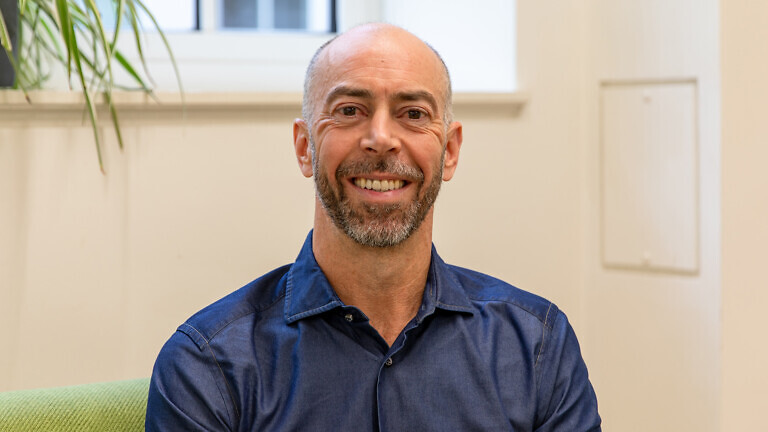Tony Hill, managing director of Lean Productions, explains why every private healthcare professional needs a social media strategy.
With NHS waiting lists growing and patients increasingly turning to the private sector, the demand for trustworthy, visible, and approachable private healthcare professionals is in high demand and is only set to increase. But in a competitive market, simply being qualified isn’t enough.
Whatever kind of healthcare practitioner you may be, your digital presence is now a critical extension of your practice. And for those in the public system hoping to transition to private work, how you appear online can make the difference between being fully booked or barely visible.
The trust gap
Patients come to you with uncertainty and hope. Trust is everything – and for most people, trust begins online.
Think about it: an anxious mother Googles “private ADHD assessment near me”; a man suffering from chronic back pain looks for osteopaths on Instagram after a recommendation from a friend; or a young woman struggling with anxiety searches YouTube for breathing techniques, and finds a therapist who “just gets it”.
But without a social media presence – or a strategy behind it – you risk being passed over, no matter how good you are clinically.
Visibility creates familiarity. Familiarity builds trust. And trust leads to bookings.
Social media is a clinical asset
It’s easy to dismiss social media as a time drain or you may feel uncomfortable with self-promotion. Let’s reframe the conversation.
Social media is not about vanity metrics, it’s about patient education, community-building, reassurance before first contact, correcting misinformation and highlighting your specialisms and approach.
When done correctly, it doesn’t feel like marketing. It feels like service. The very skills that make you a great clinician – listening, empathy and clear communication are the same skills that make you a powerful digital presence.

Our five top tips…
1: Build a brand, not just a profile
Many healthcare professionals have an Instagram account or LinkedIn page, but they don’t have a brand. A brand isn’t just your logo or the colour palette on your website. It’s the consistent, trustworthy impression you create across every touchpoint.
You need to ask yourself a series of questions. What do you want to be known for? Is it evidence-based menopause support for active women in their 40s? Ora compassionate approach to complex PTSD?
What values underpin your work like accessibility, education, empowerment and scientific rigour?
And how do you want patients to feel after engaging with my content? Is it reassured? Inspired? Informed?
Once you have those answers, every post, blog, video, or story becomes easier and more powerful.
2: Choose your channels strategically
Not every platform suits every clinician. Each has its unique strengths. Instagram is visual, personable, and great for storytelling. Ideal for nutritionists, physiotherapists, chiropractors, therapists, and lifestyle-focused GPs. LinkedIn is excellent for B2B connections, referrals from other professionals, and establishing clinical credibility through long-form content.
YouTube is underrated in UK healthcare. If you’re good on camera and enjoy explaining complex topics simply, it can be a long-term trust-building machine. TikTok is for brave clinicians who want to break through the noise with short, punchy health insights – especially those targeting younger demographics.
Email is still king. A monthly newsletter builds loyalty and engagement far more deeply than likes or shares.
Don’t try to be everywhere. Choose one or two platforms and master them with intention.
3: Create signature content that reflects your expertise
Avoid generic content like “5 ways to improve your health this winter”. It’s overdone, lacks specificity, and doesn’t set you apart.
Instead, develop signature content formats that reflect your voice and niche. Here are a few ideas:
- Case study style posts (with patient consent or anonymised) such as “How I helped a 52-year-old marathon runner overcome plantar fasciitis in four sessions”
- Myth-busting Mondays – Tackle common health myths in your field each week (“Menopause always starts at 50 – FALSE”)
- Behind the curtain – Show your clinical process: how you assess, what you look for, what tools you use (patients love demystification)
- Clinician confessions – Share what you’ve learned the hard way. Honest, reflective posts build deep connections.
- Mini-series content – Break down big topics over several posts. “The Sleep Series – Part 1: Why You Wake at 3 am”.
Uniqueness is currency. The more personal your content feels the more memorable and impactful it becomes.
4: Be professional and human
One of the biggest mistakes you can make online is being too clinical. Professionalism does matter, but people don’t connect with degrees and data – they connect with stories, quirks, and realness.
Use your face because patients want to see who they’ll meet. Write like you speak and avoid jargon unless explaining it. Share personal stories with a point (for example, why you got into this work). And show the day-to-day reality of private practice.
You don’t need to overshare. But showing your human side builds warmth and relatability, which is especially important in private care where patients are paying and are often anxious about the process.
5: Collaborate and cross-pollinate
You don’t have to build your brand alone. Partner with other practitioners in adjacent niches. A pelvic health physio could collaborate with a women’s health nutritionist, for example. Cross-promote each other’s content. Host joint Instagram Lives. Create co-authored blogs. Feature each other in newsletters.
This has two powerful effects. You tap into new audiences who already trust your collaborator and you demonstrate a collaborative, holistic approach – which patients love.
Collaboration builds both reach and credibility.
Patient advocacy, not brand-building
This isn’t about shouting the loudest. It’s about making it easier for the right patients to find you, trust you, and feel safe under your care. Your visibility as a trustworthy, private provider isn’t just good for business – it’s good for public health.
By showing up consistently, ethically, and creatively, you’re doing more than marketing. You’re creating an open door for the people who need you most.
That’s a brand worth building.



